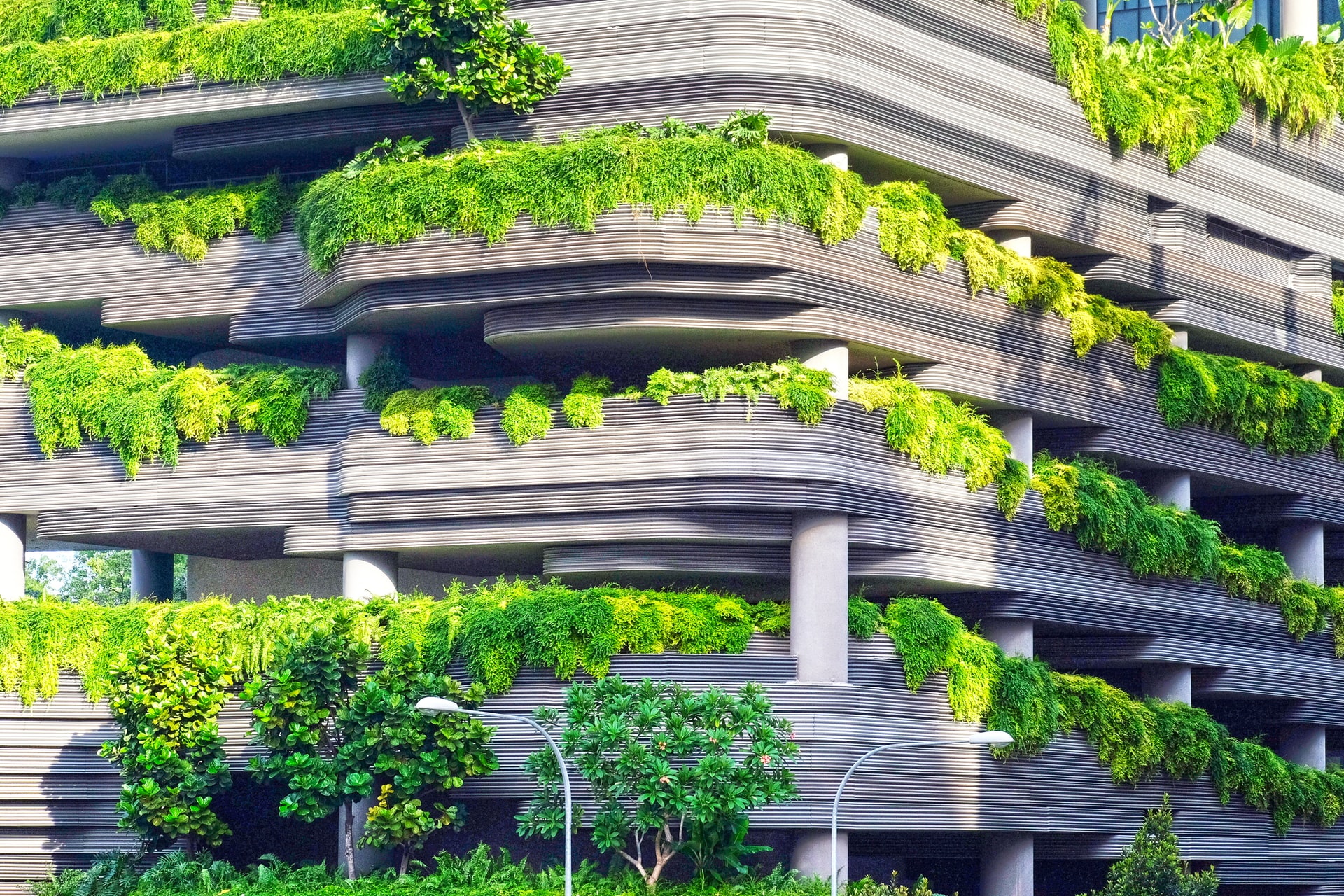A growing body of evidence, the world over, shows that green buildings offer many benefits. Green buildings provide highly effective means to achieve various global goals, which include creating thriving and sustainable communities, addressing climate change, and driving economic change.
The benefits that green buildings provide can be grouped into 3 categories: social, economic, and environmental. Here, we provide a range of statistics and facts from a variety of third-party sources that present those benefits.
1. Environmental Benefits of Green Buildings
One of the key benefits of green buildings is to our natural environment and climate. Green buildings not only eliminate or reduce negative impacts on the environment through the use of less energy, water, or natural resources, but they can also have a positive impact on the environment by increasing biodiversity or generating their own energy.
At a Global Level:
The building sector has the greatest potential for reducing greenhouse gas emissions significantly compared to other key emitting sectors -UNEP, 2009.
The emissions savings potential is believed to be as high as 84 gigatons of carbon dioxide by 2050 through direct measures in buildings such as the use of renewable energy, fuel switching, and energy efficiency – UNEP, 2016.
The building sector has the potential to make energy savings of 50 percent or more by 20250, in support of limiting the global rise in temperature to 2°C, which is higher than the pre-industrial levels – UNEP, 2016.
At a Building Level:
In Australia, green buildings that achieve the Green Star certification have been shown to produce 62 percent fewer greenhouse gas emissions compared to the average Australian buildings and 51 percent less portable water than if they had been constructed just to meet the minimum requirements of the industry.
Green buildings that were certified by the Indian Green Building Council (IGBC) have been found to enjoy energy savings of between 40 and 50 percent, and water savings of between 20 and 30 percent compared to conventional buildings in India.
In South Africa, green buildings that achieve the Green Star certification have been shown to save between 30 and 40 percent energy and carbon emissions annually, on average, and between 20 and 30 percent potable water annually when compared to the industry norm.
In the United States along with other countries, green buildings that achieved the LEED certification have been found to consume 11 percent less water and 25 percent less energy compared to non-green buildings.
2.Economic Benefits of Green Buildings
A smart building also offers several economic or financial benefits, which are relevant to a variety of different people or groups of people.
Cost savings for households or tenants on utility bills through water and energy efficiency; higher property values and lower construction costs for building developers; lower operating costs and increased occupancy rates for building owners; and job creation are some of the economic benefits of green buildings.
Since the 2013 groundbreaking report was published by the WorldGBC titled “The Business Case for Green Building” efforts have been made to strengthen the link between green buildings and the economic benefits that they can offer.
At the Global Level:
Global energy efficiency measures could help save an estimated €280 to €410 billion on energy spending and the equivalent to close to double the annual electricity consumption of the U.S.A. – European Commission, 2015.
At the Country Level:
In 2014, the green building industry in Canada produced $23.45 billion in terms of GDP, which represented close to 300,000 jobs (full-time) – Canada Green Building Council/ The Delphi Group, 2016.
It was projected that green building would account for over 3.3 million jobs in the United States by 2018 – US Green Building Council/ Booz Allen Hamilton, 2015.
At the Building Level:
Building owners have reported that green buildings – whether renovated or new – command an increase of up to 7% in asset value compared to traditional buildings – Dodge Data and Analytics, 2016.
3.Social Benefits of Green Buildings
The green building benefits go beyond the environment and economics. They have been shown to also bring positive social impacts. Many of the social benefits are around the health and wellbeing of people either living in green homes or working in green offices.
Workers in green, properly ventilated offices record an increase of 101% in cognitive scores – Harvard T.H. Chan School of Public Health/ SUNY Upstate Medical School / Syracuse University Center of Excellence, 2015.
Employees in offices that have windows slept an average of 46 minutes more each night – American Academy of Sleep Medicine, 2013.
According to research, better indoor air quality (high ventilation rates and low concentrations of pollutants and carbon dioxide can lead to improvements in performance of up to 8 percent – Park and Yoon, 2011.

